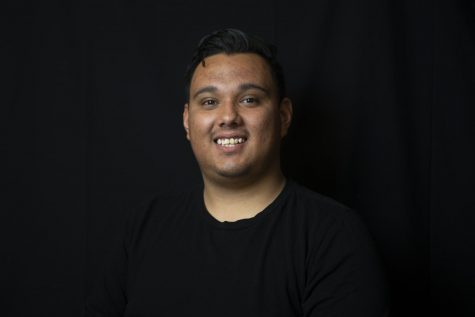Santa Rosa Junior College will offer training to students, faculty and staff on surviving an active shooter situation in light of renewed interest in nationwide gun control and campus preparedness after the Valentine’s Day mass shooting at Marjory Stoneman Douglas High School in Parkland, Florida.
The SRJC District Police will offer the training from 12-1:30 p.m. March 7 in Room 602 on the Petaluma campus and from 4:30-6 p.m. in the Doyle Library, Room 4245 in Santa Rosa.
Lt. Robert Brownlee said his department will teach community members the “run, hide, fight” method and the importance of reporting suspicious activity to authorities.
“When you identify that you’re in that kind of scenario, your best option is to remove yourself from it—run,” Brownlee said. “Get out of there by any means necessary.”
Brownlee said it’s not always possible to escape, and in that case, it’s best to hide, barricade yourself and spread out and form a plan if you’re in a group.
If running and hiding fail, Brownlee said people must resort to fighting for their lives. “The last tactic is the one that, for some people, is really hard to wrap their heads around, but you’re in a survival situation. When someone has the intent to do you harm, someone has the intent. Now is the fight option, if you don’t have any other options,” he said.
Brownlee suggested forming a plan, like everyone throwing their metal water bottles at the shooter when he or she enters a classroom.
“With all these tactics—running, hiding, fighting—you’re basically buying a little time for law enforcement to respond,” Brownlee said. “A lot of the active shooter situations these days are very short-lived. They’re usually under 10 minutes, often under six.”
The Sonoma County Junior College District’s Police Department has adopted a countywide protocol that deals directly with response to such situations and will send its own specialized Active Shooter Response Team to the scene. District Police are prepared to directly intervene with the shooter’s actions to mitigate the situation while conducting simultaneous rescue operations.
The District Police train with the Sheriff’s Department and local municipal police to ensure cooperation should a mass killing attempt occur.
The best way to prevent an active shooter situation (a title that includes any mass killing scenario, regardless of the specific weapon) is to report suspicious or troubling behavior before a person gets to the point of mass murder.
The JC has a cross-department team called the Crisis Intervention Resource Team (CIRT), whose responsibility it is to intervene when students are showing signs of mental health issues, violent or otherwise.
“We have a lot of distressed students,” Brownlee said. “We have a few tools in our toolbox that we can use to deal with these things. The biggest thing is that we need to be informed, and if somebody sees something and doesn’t say anything, we aren’t informed.”
Brownlee said the presence of mental health issues does not equal a crime, and the provision of mental health resources is often the best way to intervene.
“Just because you have some sort of mental illness, that doesn’t make you some sort of criminal,” he said. “It’s basically finding any resource that will help solve this problem.”
Robin McHale, manager of the Environmental Health and Safety (EHS) office, works with the police and other departments to prepare SRJC for natural disasters and emergencies like an active shooter situation.
McHale recommended that SRJC community members take the time to educate themselves on what to do if the unthinkable happens.
“I think it’s really good for students to take initiative and learn how to best help themselves and others in that situation,” McHale said. “If you learn about it and feel comfortable, you empower yourself. It’s important to empower yourself.”
As far as preparedness is concerned, McHale said SRJC is as ready for an active shooter situation as it can be. “I think we’re doing very well,” she said. “We definitely talk about it and work on it, and we have training.”
However, some students still feel unprepared.
Kinesiology major Luis Quezadas, 18, said, “My biggest concern would be that if there was something like this to happen, how would any of us know what to do and prepare ourselves?”
Psychology major Guadalupe Lopez, 20, said SRJC should hold drills so community members can practice their response. “It’s kind of scary because we know it can literally happen any minute at SRJC,” she said. “We don’t have drills on campus and I think that’s something that should be embedded on campus.”
In a faculty email chain, instructors called attention to campus vulnerabilities, such as the emotional toll on students, inadequate door locks, the need for intruder-on-campus drills and the increased danger of classrooms with too many windows.
Humanities instructor Jill Kelly-Moore said she and her students made a plan, should they hear gunshots.
“My students and I have made an agreement,” Kelly-Moore said. “We will shut off the lights, get on the floor, one person will call 911 and we will hope they pass us by.”
Students, faculty and staff who want to learn more can contact the District Police at 707-527-100 and EHS at 707-527-4803.
To report concerns about a particular student, go to: https://cirt.santarosa.edu.
Resources and informational videos are available through the Department of Homeland Security at https://www.dhs.gov/active-shooter-preparedness.






